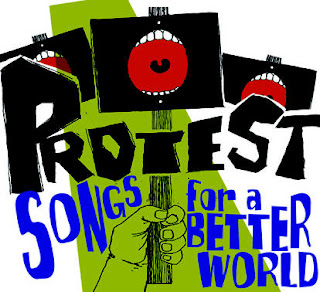 Makeda “Dread” Cheatom, known as San Diego’s “most colorful flower child,” is an ambassador of art and activism. "She has worked tirelessly to promote peace, love, culture (and counterculture), art, music and humanity via the WorldBeat Cultural Center, Radio Fusion Reggae Makossa Show, Bob Marley Day, as well as her many other projects and causes. Since 1976, she has been on a mindful, multi-cultural mission to make the world a better place. From opening The Prophet, San Diego’s first non-smoking vegetarian restaurant (irking at least one visiting smoker in the process, ex-Beatle George Harrison), to befriending Bob Marley and Fidel Castro; from pioneering California’s longest running reggae radio show 91X, to spreading the WorldBeat word of positivity and unity, Ms. Dread has been an active altruist."
Makeda “Dread” Cheatom, known as San Diego’s “most colorful flower child,” is an ambassador of art and activism. "She has worked tirelessly to promote peace, love, culture (and counterculture), art, music and humanity via the WorldBeat Cultural Center, Radio Fusion Reggae Makossa Show, Bob Marley Day, as well as her many other projects and causes. Since 1976, she has been on a mindful, multi-cultural mission to make the world a better place. From opening The Prophet, San Diego’s first non-smoking vegetarian restaurant (irking at least one visiting smoker in the process, ex-Beatle George Harrison), to befriending Bob Marley and Fidel Castro; from pioneering California’s longest running reggae radio show 91X, to spreading the WorldBeat word of positivity and unity, Ms. Dread has been an active altruist." As an example of Ms. Dread’s dedication to mindfulness and the spreading of positive consciousness, she has begun a thirteen day fast, each day representing a different theme. Her life style and impacting statements parallel with WorldBeat Center's ideology of world unification. Makeda states that her fasts symbolize prayers in hopes to share her vision of world compassion and peace. The themes are all dedications to individuals, earth healing, and spiritual transitions.
Days five, nine, ten, and twelve of her fast goes out to people who have lost their homes, family members in the prison system complex, families struggling in the world, and to all the heroes and sheroes who did grand things on our planet earth. Makeda states, “We are all connected. Our community is hurting, it hurts us too.” She emphasizes that “At any rate, it hurts to be away from your family member...You have to realize this is all karmic and they have to go through experiences themselves.” Day eleven is dedicated to our non-profit, the WorldBeat Center and all members, as well as other grassroots organizations that thrive for social understanding, peace, and unification.
Days six and seven reach out to Mother Earth. Her fast is sent out in prayers to stop world wars and conflicts. She prophesizes, “War will never end until we look deep within. Peace will never come until we realize that we must rid ourselves of greed, hatred, jealousy, division, and selfishness.” – In dedication to our mother earth, the animals and plants. There are changes on Earth happening as we breathe. Our environment is weakening at an unbelievable rate, and many of our precious animals are becoming extinct. Day eight is livicated to Ras Jahluel and all Rastas who have made their transition to Zion. Day thirteen is for transformation and finding our way back home.
Each of Makeda’s fast goes out in hopes to reach out to humanity and for the sake of our planet earth. She lives by the motto “We are what we eat and we become what we eat.” As a raw foodist herself, she states that we must remain aware of what’s
 happening around us, as well as where our food is coming from, how it is made, and by whom; considering migrant farm workers, rising levels of hormone injected animals, and the conglomerate corporations profiting from it. Through email blasts and online blogs, Makeda’s message for her fast went out to thousands of individuals worldwide. Hundreds of individuals have responded in locations from Japan, Ghana, Brazil, Mexico, U.S. and other parts of the world showing her companionship and giving her thanks especially in difficult times all over the world. They are now jumping in the fasting bandwagon! Makeda Dread continues her mission of spreading love, positivity, health and the amalgamation and appreciation of all cultures.
happening around us, as well as where our food is coming from, how it is made, and by whom; considering migrant farm workers, rising levels of hormone injected animals, and the conglomerate corporations profiting from it. Through email blasts and online blogs, Makeda’s message for her fast went out to thousands of individuals worldwide. Hundreds of individuals have responded in locations from Japan, Ghana, Brazil, Mexico, U.S. and other parts of the world showing her companionship and giving her thanks especially in difficult times all over the world. They are now jumping in the fasting bandwagon! Makeda Dread continues her mission of spreading love, positivity, health and the amalgamation and appreciation of all cultures.






